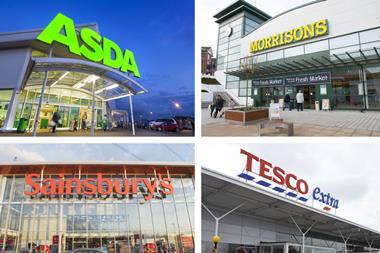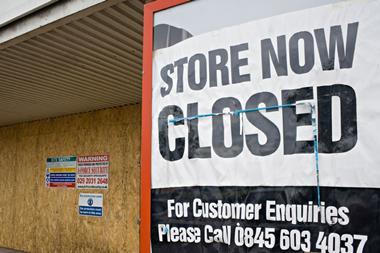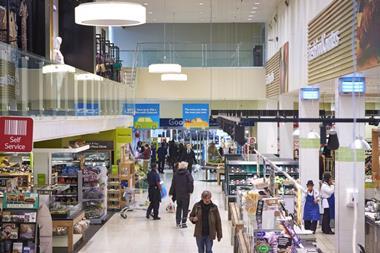
The beleaguered UK grocery sector is showing the first “green shoots” of recovery as levels of failing businesses in the supply chain eased for the first time in more than two years.
Business recovery firm Begbies Traynor said that despite the raging supermarket price war stability may finally be returning to the struggling sector.
Its Red Flag Alert research for the third quarter of 2015 found UK food retailers experienced their first quarterly decline in ‘significant’ financial distress in in 27 months, decreasing 5% to 5,002 over the past three months, compared with 5,258 companies in the previous quarter.
The last time food retailers saw any improvement in financial distress was during the second quarter of 2013 when there were 2,428 failing businesses in the sector – 51% fewer than the number struggling to make ends meet today.
The findings follow Sainsbury’s springing an unexpected profits upgrade on the City last month in the first signs that conditions in the sector may have turned a corner.
Begbies Traynor partner Julie Palmer said the troubles of the industry over the past nine quarters directly mirrored the “meteoric rise” in popularity of the German discounters Aldi and Lidl.
“While the major supermarkets have taken drastic action to readjust their ailing business models by slashing prices in a bid to compete, the UK’s damaged food supply chain remains the biggest loser from the changing food retail environment, with levels of financial distress in this sector nearly tripling in just over two years as a result of intense margin pressure,” she added.
“Whilst the UK grocery sector is not out of the woods yet, our latest quarterly findings indicate that it is seeing the first green shoots of recovery. After a protracted period of job cuts, price readjustments and forced efficiency improvements, businesses across the sector now appear to be better equipped for the new normal of a low margin landscape.”
Food and drink manufacturers also witnessed their first decline in ‘significant’ financial distress in more than two years, falling 4% to 1,553 companies during the past quarter, down from 1,622. Since the second quarter of 2013, the number of grocery suppliers which are suffering increased 147% from 628 businesses.
“The big test over the coming months will be the extent to which retailers are able to pass higher wage costs on to consumers, as opposed to squeezing their still under pressure suppliers, especially in an environment where household budgets won’t see a repeat of the recent benefit of much reduced petrol prices,” Palmer said.



















No comments yet